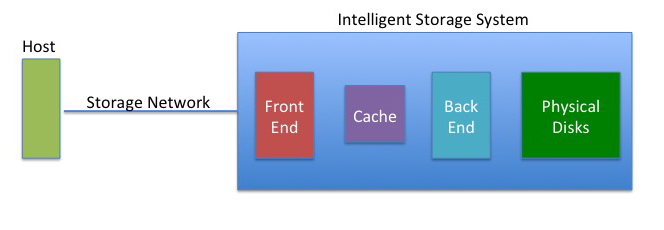Storage Mastery: Intelligent Storage Systems

Editor's note: This is the eighth post in a blog series by CBT Nuggets trainer Anthony Sequeira that will cover IT storage technology.
In the previous post of this series, we covered RAID technology, which of course, helped to revolutionize the storage industry. During the past few years, however, it has become clear that RAID alone cannot keep up with the incredible demands of today's applications, especially when one considers industries such as finance and research, among others.
Today, a new breed of storage devices have emerged that we can lump together in a broad category termed "Intelligent Storage Systems." The purpose of this post is to present you with the components of these systems so that you can better understand them.
The figure below shows the major components of such a system.
Front End
Notice this is the interface between the hosts in your network and the Intelligent Storage System itself. Most front ends will have redundant front-end controllers, as well as redundant ports for connectivity. Supported protocols include Fibre Channel, iSCSI, FICON, and FCoE.
Cache
Cache is very fast memory that exists to speed up the IO processes. If cache is doing its job properly, the number of mechanical disk operations is dramatically reduced.
The cache is organized in pages and consists of the data store and tag RAM. The data store holds the data that is being read or written, and the tag RAM is responsible for tracking the location of the data in the actual data storage (the physical disks).
Back End
The job of the back end is to provide an interface between the cache and the physical disks. It consists of back end controllers and back end ports. The back end is often responsible for Kill detection and correction, as well as the RAID functionality of the system. Like the front end, most systems provide multiple controllers and multiple ports for the most redundancy possible.
Physical Disks
Another great feature of the Intelligent Storage System is the variety that is possible with the physical disks. Most systems support a variety of disks and speeds, including FC, SATA, SAS, and flash drives. Most even support a mix of disks in the same array!
Until next time, I hope you found this blog post informative, and I'd like to thank you for reading!
delivered to your inbox.
By submitting this form you agree to receive marketing emails from CBT Nuggets and that you have read, understood and are able to consent to our privacy policy.